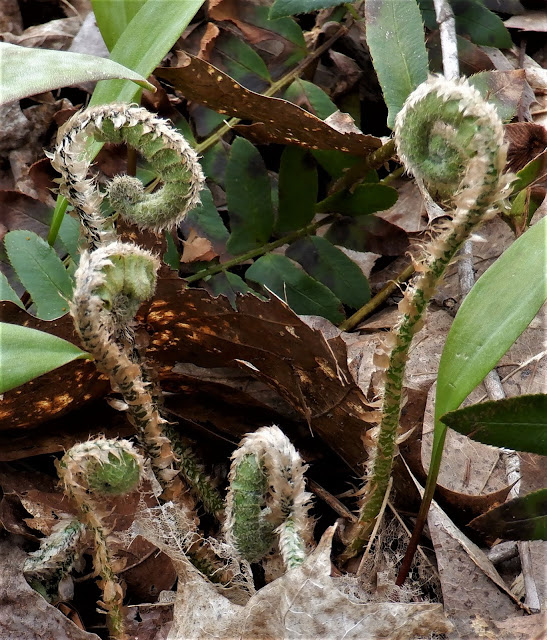After a life time of work in the forests of British Columbia, scientist Suzanne Simard has just released her life’s story in Finding the Mother Tree: Discovering the Wisdom of the Forest. Her love of trees began as a child in a family that logged in a sustainable way in BC. Working in the forestry industry as an adult led Simard to follow her hunches and explore new ways that science could look at the interconnectedness of the forest.
Simard and other scientists found
that mycorrhizal fungi connected the roots of trees and other plants, forming
what was dubbed the wood-wide-web. She
found that trees not only cooperated but that the huge ancient mother trees
favoured their own offspring in sharing resources. Even trees that were dying, sent all of their
nutrients flooding to the saplings.
Finding the Mother Tree
details this journey of hunches, intuitions and
exacting scientific protocol to describe the interactive community of the
forest. When foresters clear cut an
area, this web is destroyed and the seedlings that are replanted have no access
to a sharing elder or other species to protect them. Birches, for example, protect other trees
from root disease. Saplings that grow
just outside of the dripline of a mother tree grow well. Trees that are planted on a clear cut that
has had the other trees and stumps removed along with the fungal rich soil, are
left to fend from sun, wind, snow and disease alone. Many and in some cases most, fail to thrive.
Simard weaves her own life’s story
throughout the book, much like Robin Wall Kimmerer does in Braiding
Sweetgrass. As she sees parallels
between her own family and the forest, she paints a picture that is new for
science and she realizes that she is approaching the same conclusions that are
held in Indigenous wisdom, but from a completely different starting point. Simard writes:
“I don’t presume to grasp
Aboriginal knowledge fully. It comes
from a way of knowing the earth – an epistemology – different from that of my
own culture. It speaks of being attuned
to the blooming of the bitterroot, the running of the salmon, the cycles of the
moon. Of knowing that we are tied to the
land – the trees and animals and soil and water – and to one another, and that
we have a responsibility to care for these connections and resources, ensuring
the sustainability of these ecosystems for future generations and to honor
those who came before. Of treading
lightly, taking only what gifts we need, and giving back. Of showing humility toward and tolerance for
all we are connected to in this circle of life. “( p. 294)
Simard chronicles how the decisions
made by forestry companies and government policy makers which are based on
making the maximum profit are damaging to the forests, the rivers, animals and
humans. Recent wild fires are only just
one result of this misguided management.
But she has solutions. “We must heed the answers we’re being given,”
she writes. “I believe this kind of
transformative thinking is what will save us.
It is a philosophy of treating the world’s creatures, its gifts, as of
equal importance to us. This begins by
recognizing that trees and plants have agency.
They perceive, relate, and communicate; they exercise various
behaviors. They cooperate, make
decisions, learn, and remember – qualities we normally ascribe to sentience,
wisdom, intelligence. By noting how
trees, animals, and even fungi – any and all nonhuman species – have this
agency, we can acknowledge that they deserve as much regard as we accord
ourselves. We can continue pushing our
earth out of balance, with greenhouse gases accelerating each year, or we can
regain balance by acknowledging that if we harm one species, one forest, one
lake, this ripples through the entire complex web.” (p. 295)
 |
| Suzanne Simard |
Simard advises, “expanding our
modern ways, our epistemology and scientific methodologies, so that they
complement, build on, and align with Aboriginal roots.” (p. 295) Suzanne Simard is one of the growing number
of scientists who are coming to this conclusion. What they seem to have in common is a deep
love of nature, the ability to tap into their intuition and follow its lead
through the scientific model and the persistence to share their findings which
can only come from deep love. Using
their hearts, both sides of their brains and their ability to communicate, these
scientists are changing how we do business.
Our economic models need to reflect the truth of our interconnectedness as well if we are going to heal the damage that has already been done. There are voices from within economics who
are rethinking this already. Hopefully,
they are also powered by love as they get their message out, this new
story. And what can we do? We can listen, pay attention and support them
as they emerge. We can be a part of this
new story.
Suzanne Simard (2021) Finding
the Mother Tree: Discovering the Wisdom of the Forest. Penguin Canada.










